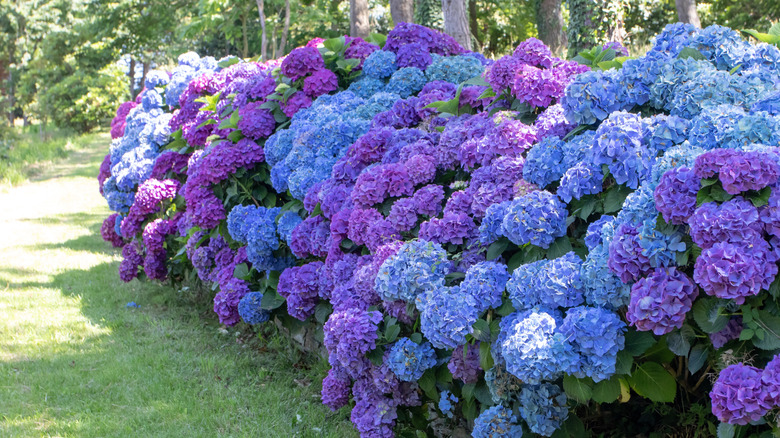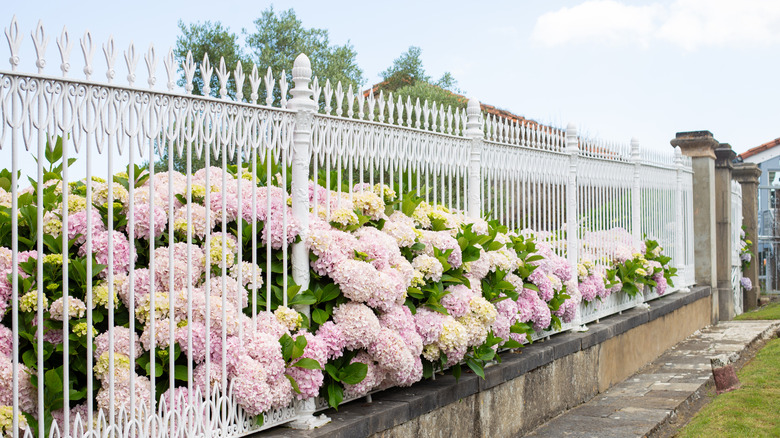How To Grow A Full Hydrangea Hedge From Just One Plant
A full hedge of blooming hydrangeas makes a showstopping addition to your home or property, and you don't have to buy dozens of plants to create it. Instead, all you need is just one plant that grows well on your property. If you have found the best place to plant hydrangeas for maximum blooms, capitalize on it and grow even more! You can multiply your hydrangeas for free using a traditional propagation technique called layering. Layering involves bending a low-growing branch from the parent plant down to the ground. This simple method takes advantage of the plant's ability to form roots along the buried stem, without detaching it until the new roots are established.
Layering works well for woody shrubs like hydrangeas because it reduces plant stress and requires no special equipment. Once rooted, the buried section becomes an independent plant that can be separated and replanted somewhere else in your garden. Unlike cuttings, which may die before rooting, layering benefits from the mother plant until the new plant is strongly rooted and can thrive on its own. Layering works best in spring or early summer. By repeating this process yearly, you can gradually fill an entire hedge with genetically identical plants, ensuring a uniform look. It's a cost-effective way to grow and take care of hydrangeas while still using the variety that grows best in your location.
Step-by-step layering for a thriving hydrangea hedge
To propagate your hydrangeas by layering, first choose a healthy, flexible lower branch that can be bent to touch the ground without breaking. Lightly cut the underside of the stem where it will be buried. You can apply rooting hormone to the wound to stimulate faster, stronger root formation, improving your chances of success, but it isn't necessary. Dig a shallow trench a few inches deep, lay the wounded section of the branch in the trench, and bend it back up and out. Do not bury any leaves. Cover it with soil, leaving the tip exposed, and secure it with a landscape staple, a rock, or a brick to keep it in place. Consistent moisture is essential while the buried section is rooting, so water the area regularly. If done in the preferred spring or early summer, this may not be a problem as rainfall is often more frequent during these times of the year.
During the growing season, roots will form at the buried section. Within a few months, you can test for rooting by gently tugging on the branch. If you feel resistance, the branch has been well-rooted. Once rooted, sever it from the mother plant with pruners and transplant your new hydrangea to its permanent spot in the hedge row. Repeat this technique each year to gradually establish a dense, beautiful hedge from a single original plant. This old-fashioned, proven method creates dramatic, thriving borders with little investment other than a few gardening staples and time. It's worth the effort to add beauty to your landscape with ease.

